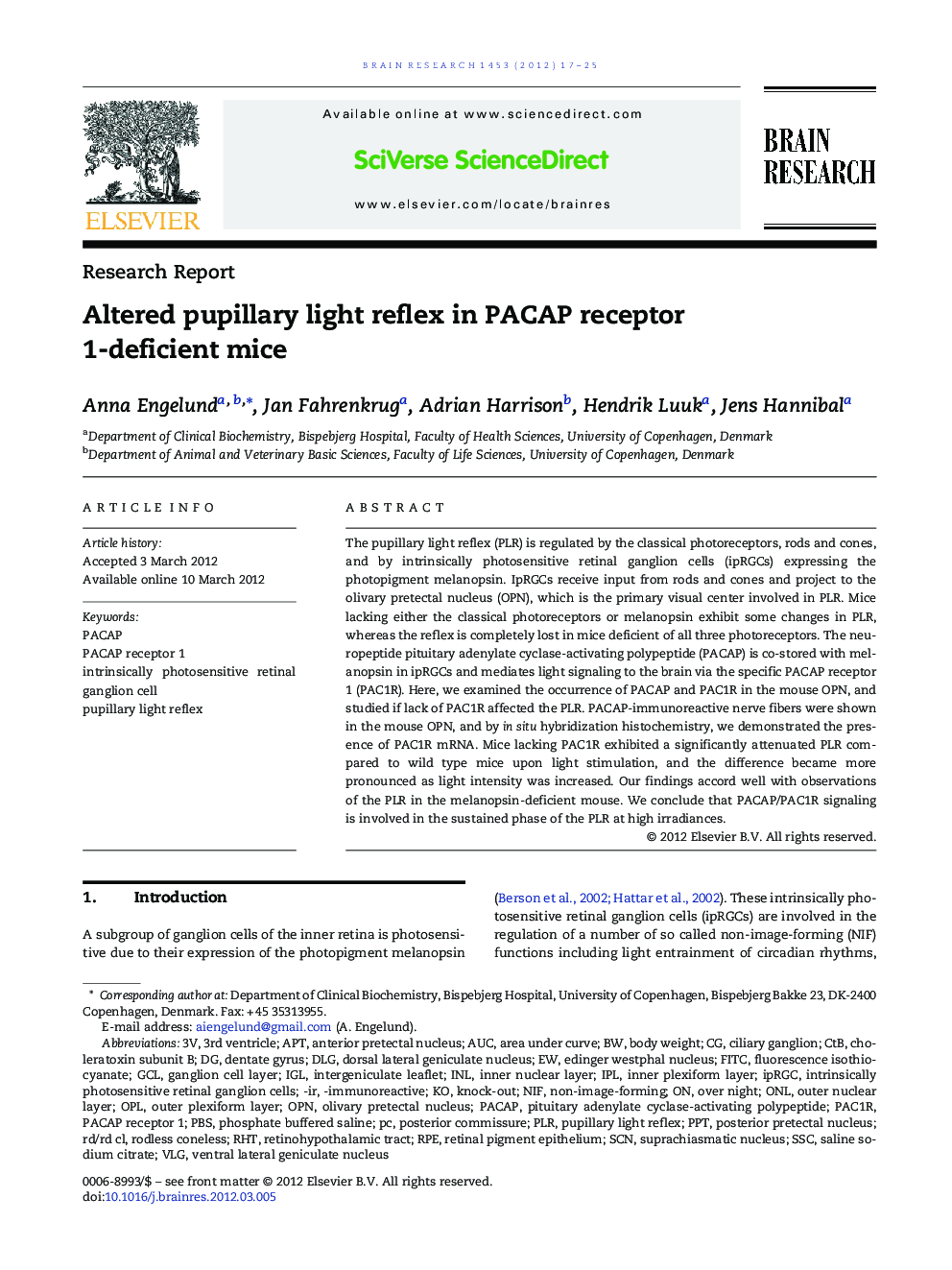| Article ID | Journal | Published Year | Pages | File Type |
|---|---|---|---|---|
| 6264359 | Brain Research | 2012 | 9 Pages |
The pupillary light reflex (PLR) is regulated by the classical photoreceptors, rods and cones, and by intrinsically photosensitive retinal ganglion cells (ipRGCs) expressing the photopigment melanopsin. IpRGCs receive input from rods and cones and project to the olivary pretectal nucleus (OPN), which is the primary visual center involved in PLR. Mice lacking either the classical photoreceptors or melanopsin exhibit some changes in PLR, whereas the reflex is completely lost in mice deficient of all three photoreceptors. The neuropeptide pituitary adenylate cyclase-activating polypeptide (PACAP) is co-stored with melanopsin in ipRGCs and mediates light signaling to the brain via the specific PACAP receptor 1 (PAC1R). Here, we examined the occurrence of PACAP and PAC1R in the mouse OPN, and studied if lack of PAC1R affected the PLR. PACAP-immunoreactive nerve fibers were shown in the mouse OPN, and by in situ hybridization histochemistry, we demonstrated the presence of PAC1R mRNA. Mice lacking PAC1R exhibited a significantly attenuated PLR compared to wild type mice upon light stimulation, and the difference became more pronounced as light intensity was increased. Our findings accord well with observations of the PLR in the melanopsin-deficient mouse. We conclude that PACAP/PAC1R signaling is involved in the sustained phase of the PLR at high irradiances.
⺠We studied the role of PACAP and PACAP receptor 1 in pupillary light reflex. ⺠PACAP-positive fibers were found to innervate the mouse olivary pretectal nucleus. ⺠Expression of PACAP receptor 1 was observed in the mouse olivary pretectal nucleus. ⺠PACAP receptor 1-deficient mice exhibited attenuated pupillary light reflex.
